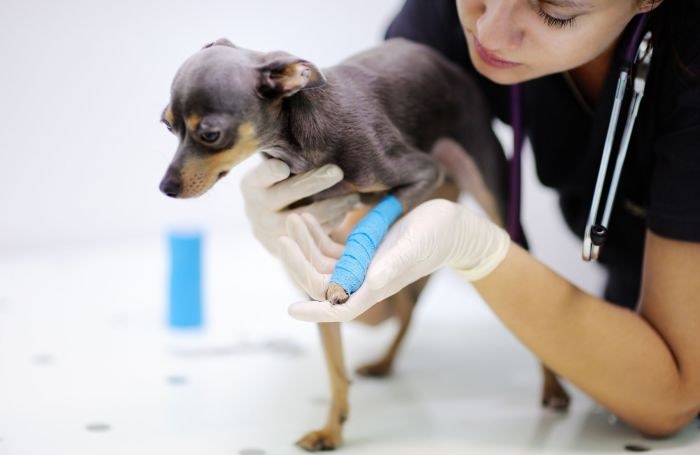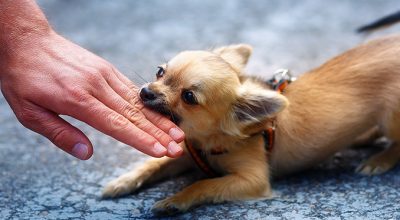All pet owners also need familiarity with the fundamentals of animal care. Guarantee a long and healthy life for their pets and themselves. Hypoglycemia or Low Blood Sugar in Chihuahuas are a frequent issue that owners of tiny toy breed dogs should be aware of to keep their pets healthy.
Hypoglycemia is a medical word that translates as “low blood sugar”. You are undoubtedly familiar with this phenomenon in humans with diabetes. The situation in dogs is quite similar to that seen in people with diabetes. Low blood sugar levels in dogs may be hazardous since the brain requires glucose (sugar) to function correctly. When glucose levels go too low, it may have severe implications for the body.
Hypoglycemia is a common problem in dogs, and it is particularly prevalent in toy breeds such as the Chihuahua. Since Chihuahuas have breed to be tiny, they naturally have a low body mass, as explained above. Since their small body mass cannot effectively store sugar because of low body fat. Dog owners who care for their pets must understand the severe risks of hypoglycemia in these tiny breeds.

Chihuahuas are prone to Hypoglycemia
Because the body of a newborn Chihuahua puppy is very delicate during his first few months. Hypoglycemia is one of the most common worries of new Chihuahua puppy parents. Even while this disease is not relate to a particular genetic flaw. It is associate with the tiny size of the breed in general. Because Chihuahuas are adapt to hot areas, their bodies have a restricted amount of fat cells to retain fat. This allows them to remain calm in high temperatures. It also means that their batteries will not keep them running for very long. When your dog’s fat cells run out, his body will begin to draw sugar straight from his circulation, resulting in various health issues. Even though hypoglycemia is a frequent and severe health issue in young Chihuahuas, owners of older dogs should also be on alert for warning symptoms of the condition.
🦴 Risk Factors
The signs of hypoglycemia in young Chihuahuas may manifest themselves for a variety of causes. Missing meals, even a couple each week, or overexerting your dog’s biochemical resources may be enough to deplete their biochemical reserves. A study conducted Chihuahuas found that puppies between the ages of 6 and 10 weeks are more susceptible to hypoglycemia than older puppies because they have not yet developed a functioning padding of fat cells. The pressure of moving to a new home or meeting new people or pets is enough to cause a tiny dog’s appetite to suppress, which may result in hypoglycemia conditions developing very rapidly.
🦴 Mild Symptoms
The signs and symptoms of hypoglycemia appear gradually and are dependent on your dog’s current blood sugar levels. The severity of the illness directly impacts the type and degree of the symptoms that appear. It is essential to watch young Chihuahuas until they are at least a few months old before allowing them to roam free. During the first few months after bringing a new puppy home, keep an eye out for some of the early signs of hypoglycemia, including lethargy, anxiety, and shivering. If your dog’s blood sugar levels decrease, he may lose control of his body and may exhibit apparent muscular spasms or disorientation, among other symptoms. These symptoms may be frightening, particularly in very young dogs. Still, the disease is highly curable if you take your dog to the veterinarian as soon as possible after seeing them.
🦴 Very Severe Symptoms
Mild hypoglycemia in Chihuahuas may quickly deteriorate into a life-threatening condition in a couple of hours. It is possible to temporarily balance their blood sugar levels by including a few drops of corn syrup into their meals. Your dog may behave strangely or perhaps fall into a coma if they are suffering from hypoglycemia in its late stages. After washing your hands, apply a few drops of corn syrup to the tips of your fingers. Using them to rub over your dog’s gums and tongue can help get some sugar into his system. You must take him to the animal doctor as early as possible if he begins to convulse, suffer seizures, or lose consciousness.
A variety of factors may cause canine and puppy hypoglycemia.

Blood sugar levels are controll by a complicate interplay of hormones and other physiological processes, difficult to understand.
When it comes to dogs, hypoglycemia may cause by either aberrant hormonal processes or by the dog’s body’s failure to retain a sufficient quantity of glucose in the bloodstream. A variety of factors may provide to the development of these anomalies, including but not limited to
🐾 Insulinoma
Insulin is produce by the pancreas, which causes blood glucose levels to drop. Insulinomas are tumors that develop in the pancreas as a result of the production of insulin by cells.
A rise in insulin production may cause by Insulinomas, resulting in a drop in blood sugar levels.
🐾 Overdose of insulin
An excessive quantity of insulin is given to a diabetic dog, resulting in the dog experiencing hypoglycemia.
🐾 Hypoglycemia in Toy Breeds
Dogs of small stature (such as Chihuahuas, Yorkshire Terriers, Maltese, Toy Poodles, and Pomeranians) are more susceptible to hypoglycemia than larger breeds owing to a metabolic condition. To prevent hypoglycemia in a toy breed dog, it is best to give her three small meals each day.
🐾 Hypoglycemia in a Puppy
The development of hypoglycemia in pups, mainly toy breed puppies under the age of 5 months, is prone to occur because they are less capable of storing and mobilizing glucose than adult dogs.
Furthermore, compared to other breeds, toy breed pups have greater brain mass per unit of body weight, which means they need more glucose for proper brain function.
A variety of circumstances may trigger a hypoglycemic episode in a puppy. For example, if the puppy skips a meal, gets cold, or is exhaust or anxious, these are all indications that something is wrong.
Since hypoglycemia mainly affects pups between the ages of 5 and 16 weeks, a puppy may overcome this illness as she grows older. In contrast, if the dog is highly string or has a lot of anxious energy, she must keep as quiet as possible throughout training.
🐾 Addison’s Disease
Addison’s disease in dogs is a disorder in which the adrenal glands fail to produce enough corticosteroid hormones, resulting in the dog becoming overweight. Hypoglycemia is one of the consequences of this hormone deficit.
Blood sugar levels are control by a complicate interplay of hormones and other physiological processes, difficult to understand.
When it comes to dogs, hypoglycemia may cause by either aberrant hormonal processes or by the dog’s body’s failure to retain a sufficient quantity of glucose in the bloodstream. A variety of factors may provide to the development of these anomalies, including but not limited to
🐾 Insulinoma
Insulin is produce by the pancreas, which causes blood glucose levels to drop. Insulinomas are tumors that develop in the pancreas as a result of the production of insulin by cells.
A rise in insulin production may cause by Insulinomas, resulting in a drop in blood sugar levels.
Also Read: How to Help My Chihuahua Lose Weight? Tips to Try!
Hypoglycemia in Dogs: Signs and Symptoms

Chihuahua dogs and pups that have deficient blood glucose levels often exhibit the following symptoms:
- Lethargy and sluggishness
- Confusion and disorientation are commonplace.
- Restlessness and agitation are common symptoms of depression.
- Inability to coordinate muscle movements
- Nervousness
- Trembling
- Seizures
In extreme instances, the dog may fall comatose, and in rare cases, it may even pass away.
The intensity of the symptoms is determine by the amount of blood glucose in the body and how blood glucose levels decrease. If a dog with minor signs of hypoglycemia is not address, the dog’s condition may worsen quickly.
It is critical to get veterinarian care as soon as possible! Dogs suffering from hypoglycemia for an extended time or who experience the illness regularly may suffer irreversible brain damage.
Treatment for Hypoglycemia in Dogs: A First Aid Guide
If your dog is predisposed to hypoglycemia, you should prepare to cope with the development of the illness at any point in the future.
As previously said, hypoglycemia is very hazardous and, if left untreated, may be fatal if not treated immediately. It is critical to get veterinarian care as soon as possible.
However, there are many things that you may do to keep the illness from worsening before taking your pet to the veterinarian.
The first step is to get the blood glucose level down to a safe range for the patient. This may be accomplished by providing your dog with a supply of sugar, such as syrup, honey, or jam, via the oral cavity.
Keep corn syrup or maple syrup on hand at all times. Small dogs should be given one teaspoon of syrup, while big dogs should be given one tablespoon of syrup.
Even if your dog is already asleep, you may administer the syrup by rubbing it on the gums beneath the mouth.
Maintain your dog’s body temperature since low blood sugar will result in hypothermia.
Additionally, have some natural treatments for seizures in your dog’s first aid box in case your dog suffers from a seizure episode as a consequence of hypoglycemia in your home.
Diet for Hypoglycemia in Dogs
Many dog owners are curious about what kind of food is best for their pets that have hypoglycemia.
A dog suffering from this disease should be fed a natural, well-balanced diet that is rich in the following nutrients:
- Animal proteins, for instance, chicken meat, turkey meat, fish meal, and so on, are used in this recipe.
- Fats that are healthy, for example, Omega-3 fatty acids.
In case your dog is susceptible to hypoglycemia episodes, you should massage into her gums daily.
Puppies are at risk for hypoglycemia if they do not get proper nutrition.
Because hypoglycemia may be deadly, you should take precautions to ensure that this does not happen to own dog puppy.
Luckily, avoiding hypoglycemia in pups is a straightforward procedure.
- Provide More Frequent Feeding: First and foremost, if your puppy is predisposed to this illness, you should provide her with more feedings regularly, ideally every 3 to 4 hours.
- Within meals or snack or 2 times a day, gently massage the inside of your puppy’s gums with a sweetener such as honey, corn syrup, or even plain sugar water to keep them healthy.
- Avoid Stress: As previously said, pups are more prone to hypoglycemia episodes when they are under stress. It is important to note that pressure may come from various causes, including a new location, the first day of puppy training school, severe weather, and health problems such as worms, fleas, illnesses, etc.
Frequently Asked Questions
Q: If your Chihuahua is overweight, is this typical for them to be?
Chihuahuas kept as pets often weigh more than these limits. If they have huge bone structures or are allowed to grow overweight, they may potentially weigh more than 10 pounds. This does not prevent the chance that they are purebred Chihuahuas. Chihuahuas are a tiny dog breed that is bred for companionship. This implies that they do not need a large amount of food during the day to feel satisfied and be healthy.
Q: What are the most frequent health issues that Chihuahuas suffer from?
Hypoglycemia is one of the most frequent health issues that Chihuahuas suffer from. The consequences of failing to intervene quickly when a dog is suffering from a hypoglycemia episode may be severe (and perhaps deadly). Weakness, bewilderment, disorientation, shaking, and convulsions are some of the symptoms.
Consider buying your Chihuahua some dental chew toys to use in addition to regular teeth brushing for him. Aside from that, stay away from snacks and low-quality dog food high in starch and sugar. Hypoglycemia is one of the most frequent health issues that Chihuahuas suffer from.
Q: What type of illness does a Chihuahua suffer from remains a mystery?
In most cases, it is a genetic illness that manifests itself around four months after the birth of a puppy. An afflicted Chihuahua may limp or avoid using the affected limb entirely if the patella is luxating. Your dog may seem to be keeping their rear legs up in the air for many minutes at a time if the condition affects the hind legs of the dog.
Q: What is the minimum age for a dog to be diagnosed with diabetes?
The majority of dogs that acquire it are five years or older when they are diagnosed. Female dogs who are not spayed are twice as likely as male dogs to develop diabetes. Pancreatitis is chronic or recurrent. When pancreatitis (pancreatic inflammation) occurs repeatedly or chronically, it may ultimately cause significant damage to the organ, leading to diabetes as a consequence.
Final Thoughts
If your dog develops any potentially life-threatening illnesses, take them to the veterinarian as soon as possible. To begin treating your dog’s less severe instances, give him a tiny dosage of sugar mixed with honey or corn syrup. This may be accomplished quickly and simply using an eyedropper or rubbing the honey directly into their gums. Give them a little bit more at a time, and if their condition does not improve within a few hours, call your veterinarian immediately.
Preventative treatment, on the other hand, is the most effective method to avoid hypoglycemia. A constant supply of fresh, clean water should be available to dogs. A high-protein, the low-grain diet should be the focus of one’s nutrition. Small dogs need fewer meals spaced throughout the day to maintain their energy levels.
Low blood sugar may be easily prevented with few straightforward precautions, allowing you and your dog to have a long and prosperous partnership!

Here at ILoveChihuahua, we share our personal experiences as owners of this feisty breed. We talk about recommended methods, dog supplies picks, and advice on common Chihuahua problems. Our goal is to promote responsible dog ownership, so there would be fewer Chihuahuas in shelters.


